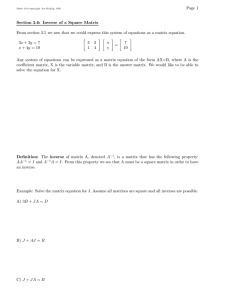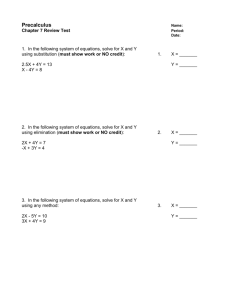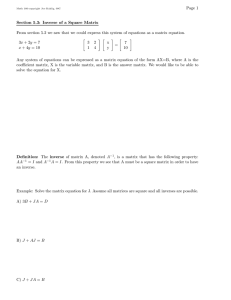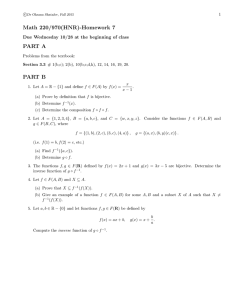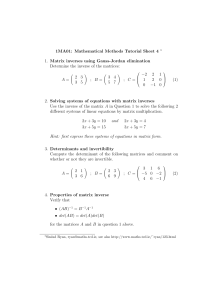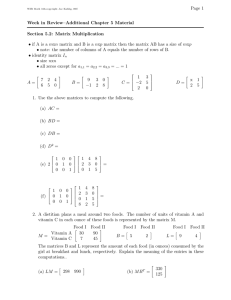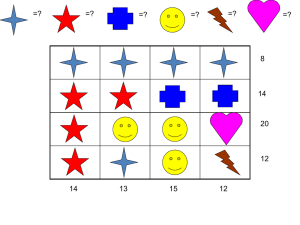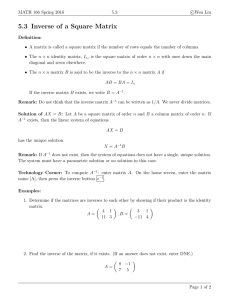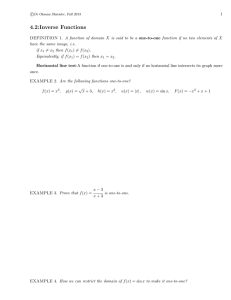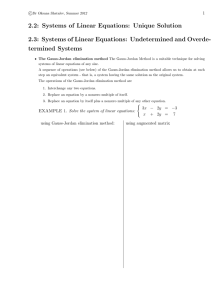Document 10581431
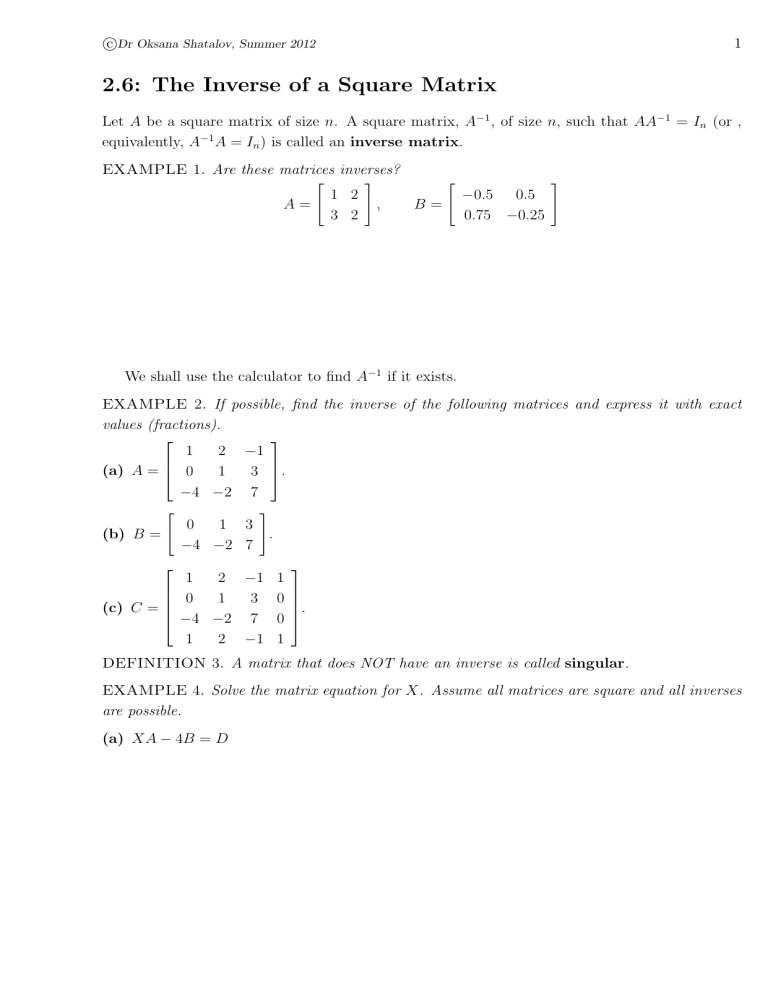
c
Dr Oksana Shatalov, Summer 2012
2.6: The Inverse of a Square Matrix
Let A be a square matrix of size n . A square matrix, A
− 1
, of size n , such that AA
− 1 equivalently, A
− 1
A = I n
) is called an inverse matrix .
= I n
(or ,
EXAMPLE 1 .
Are these matrices inverses?
"
1 2
#
A = ,
3 2
B =
"
− 0 .
5 0 .
5
0 .
75 − 0 .
25
#
1
We shall use the calculator to find A
− 1 if it exists.
EXAMPLE 2 .
If possible, find the inverse of the following matrices and express it with exact values (fractions).
(a) A =
1 2 − 1
0 1 3
− 4 − 2 7
.
(b) B =
"
0 1 3
#
.
− 4 − 2 7
1 2 − 1 1
(c) C =
0 1 3 0
− 4 − 2 7 0
.
1 2 − 1 1
DEFINITION 3 .
A matrix that does NOT have an inverse is called singular .
EXAMPLE 4 .
Solve the matrix equation for X . Assume all matrices are square and all inverses are possible.
(a) XA − 4 B = D
c
Dr Oksana Shatalov, Summer 2012
(b) X + AX = B
2
Solving Systems of Equations with Inverses.
Let AX = B be a linear system of n equations in n unknowns and A
− 1 exists, then X = A
− 1 B is the unique solution of the system.
EXAMPLE 5 .
Suppose we have the following system of linear equations:
2 x + y + 2 z = − 1
3 x + 2 y + z = 2
2 x + y + z = 1
(a) write a matrix equation that is equivalent to the system of linear equations.
(b) solve the system of equations by using the inverse of the coefficient matrix.
c
Dr Oksana Shatalov, Summer 2012
EXAMPLE 6 .
Solve the following system of linear equations:
2 x + y + 2 z = − 1
3 x + 2 y + z = 2 x + 3 z = − 4
3
